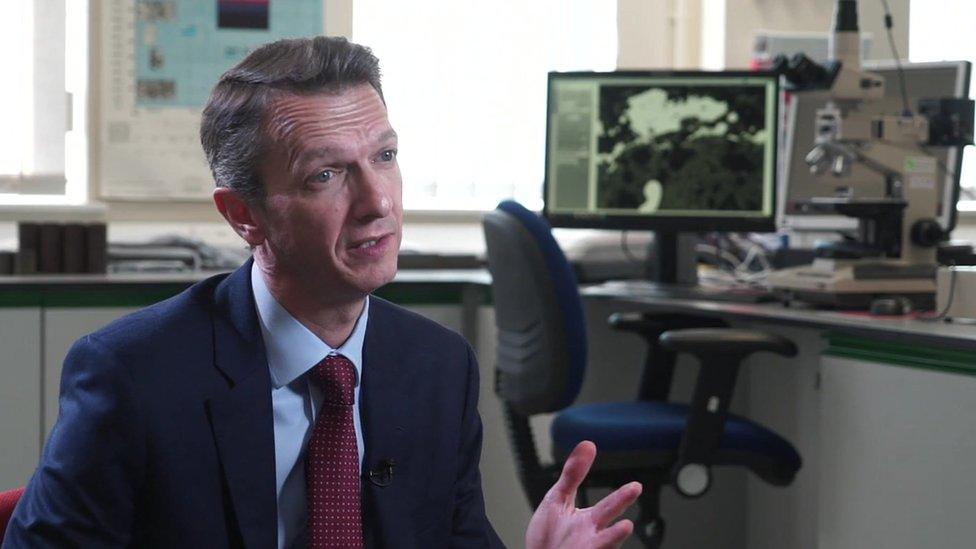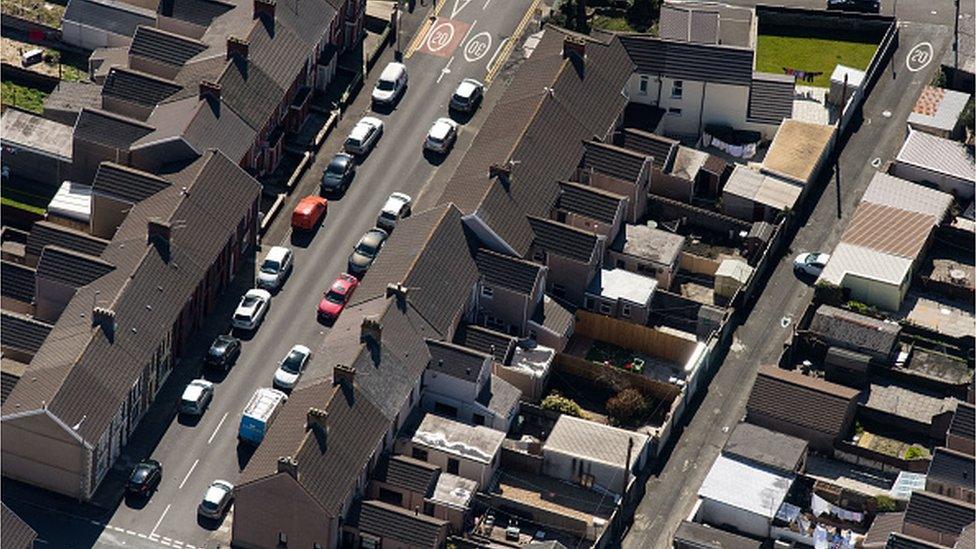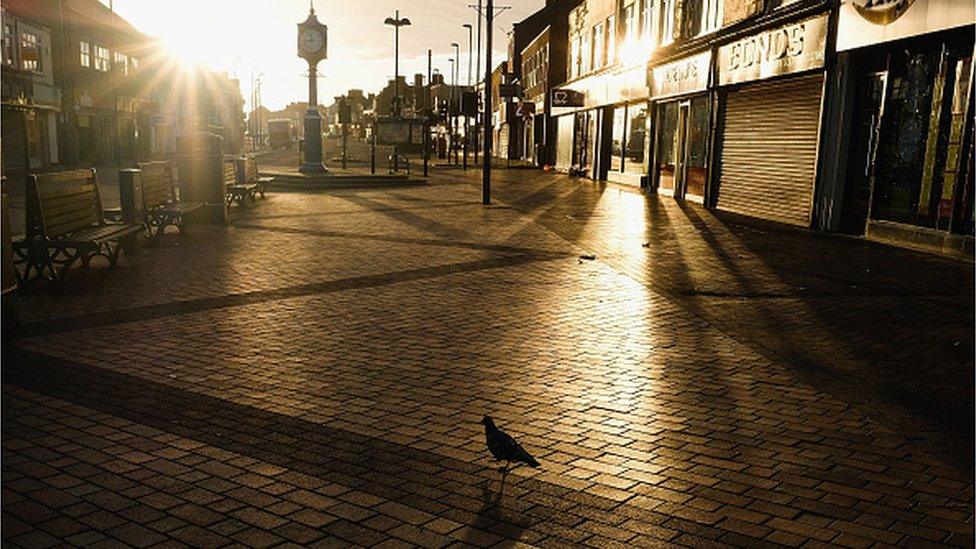Britain's inequality map - stark and growing
- Published
- comments

The Bank of England's Andy Haldane
In the Dr Seuss book One Fish, Two Fish, Red Fish, Blue Fish, the American writer makes a simple assertion.
It is better to keep your eyes open to opportunities - in Dr Seuss's case the fabulous creatures whose hair grows so fast they need a haircut everyday, or Mike who sits on the back of your bike to help you uphill.
Rather than be like Ned who simply can't get over the fact that his bed is too short.
Andy Haldane, the Bank of England's chief economist, thanks Dr Seuss at the end of his speech, Red Car, Blue Car, for his use of "simple language [that] contains an important lesson for economists like me".
In those simple terms, Mr Haldane is concerned.
Regional inequality
He is not only worried about the inequality of those on the lowest incomes versus the very rich, but also with those regions which have fallen behind in the race for economic growth since the financial crisis.
"These are material differences, both looking at the UK in isolation, but certainly in relation to other countries within Europe as well," he told me.
"There are some big gaps, north to south. There are some big gaps east to west as well.
"And the signs of those gaps having shrunk over the past few years? Well, there is not much evidence to speak to that.
"If anything these gaps - which are of long standing - have nudged a little wider over the course of the UK's recovery.
"If you look at the level of income within region, per head, it is only really London and the South East where that is back above the levels it was before the crisis.
"In pretty much every other area of the UK we are yet to move materially back to those pre-crisis levels.
"I think [the issue of regional inequality] is right up there as among the most important issues that we face today as a country."
The evidence is clear, the variations are among the widest in Europe.

GDP per head in Wales is about £18,000, less than half the level in London
National economic output per head (also called Gross Domestic Product per head, or the value of the economy divided by the number of people living in an area) is £45,000 a year in London.
That is nearly 2.5 times higher than in Wales or the North East of England, where the figure is £18,000.
Then there is the more immediately relevant average weekly wage - £670 in London, £480 in the East Midlands.
Most concerning for a government which has pledged to make the economy work "for all" - which presumably means across geographies as well as income bands - is that the issue is becoming more acute.
Since the financial crisis of 2007 and 2008, national output per head has risen by 6.6% in London, adjusted for the effects of inflation, and has fallen by 4.6% in Northern Ireland.
Across the UK net wealth has risen by 13%.
But in the North East of England and the East and West Midlands, net wealth has fallen.
Mr Haldane does not agree with those who say that the Bank's ultra-loose monetary policy - historically low interest rates and the buying of government and business debt - has made the effects worse.
Without the Bank's action, he argues, every region would have suffered far more and there is little evidence that different income groups or regions have been affected disproportionately.
As Mr Haldane puts it "monetary policy lifted all boats", it cannot be tweaked to make a regional difference.
"The tools we have at our disposal are few in number and rather blunt in impact," he said.
"They tend to work by lifting all boats across the whole of the UK.
"Interest rates for example, they are a tool for lifting the fortunes of the economy as a whole.
"We can't set different interest rates for the north and south, the east and west for borrowers.
"We can help support the economy as a whole, but those distributional differences are at root issues for government and here I would say, there is real promise with the government's new industrial strategy."

There is much to be optimistic about in Redcar
Brexit divide
I interviewed Mr Haldane in Redcar, Teesside, where there is local optimism tempered by a feeling that London has had more support since the financial crisis.
"We heard this morning, speaking to some shops in Redcar, that actually the numbers don't paint an especially optimistic picture, but the conversations are much brighter, they give a different window on that world, a more optimistic window on that world actually and that's why visits like this are so important," Mr Haldane said.
Last night Richmond-Upon-Thames in Surrey - one of the country's richest constituencies - voted for a candidate opposed to Britain leaving the EU, rejecting the Brexit-supporting Zac Goldsmith.
Redcar - one of the country's poorest - voted 66% Leave in the referendum.
Britain is beset not just by economic differences, but they are feeding through to sharp political differences.
I asked Mr Haldane if regional inequality, the sense of places being left behind not just income groups, played a part in the June 23rd vote.
"It strikes me as likely that if people are feeling a degree of detachment, of disengagement - not just economically, having a job or not having a job - but socially from different parts of the country, then that might prompt them to vote in a particular way," he said.
There is much to be optimistic about in Redcar.
Jobs are being created and unemployment is falling.
Entrepreneurs are starting small businesses.
But the big, structural issues are running against the region.
Heavy manufacturing is in decline, productivity is lower than in London and skills levels are lower.
These are the big challenges the UK faces - and today Mr Haldane has put that challenge on the map.